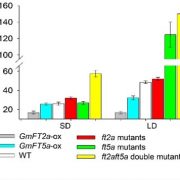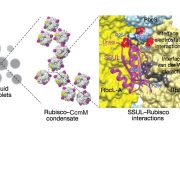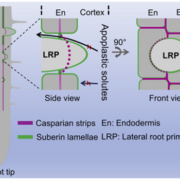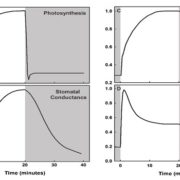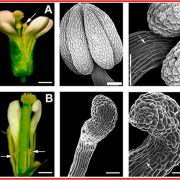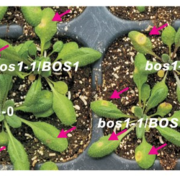The plastid lipocalin LCNP is required for sustained photoprotective energy dissipation
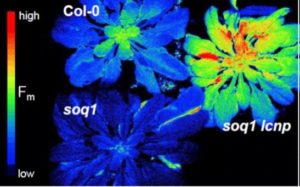 Plants have several mechanisms to protect themselves from damage from excess light, including a set of reactions collectively described as non-photochemical quenching or NPQ. One of these is a sustained and slowly reversible form of NPQ, which the authors have named qH. How this sustained NPQ functions is not known. Starting with a previously identified double mutant, soq1 (suppressor of quenching1) npq4 (non-photochemical quenching4), which has enhanced qH, Malnoë et al. carried out a genetic screen to identify suppressors. One of the mutants they isolated affects chloroplastic lipocalin, newly renamed as LCNP (to avoid confusion with the common abbreviation for chlorophyll, CHL). Lipocalins are small proteins that bind small hydrophobic molecules. Although the mechanism remains unclear, the authors show that LCNP protects the thylakoid membrane and prevents singlet oxygen stress by enabling sustained NPQ in the peripheral antenna (LHCII) of photosystem II. (Summary by Mary Williams) Plant Cell 10.1105/tpc.17.00536
Plants have several mechanisms to protect themselves from damage from excess light, including a set of reactions collectively described as non-photochemical quenching or NPQ. One of these is a sustained and slowly reversible form of NPQ, which the authors have named qH. How this sustained NPQ functions is not known. Starting with a previously identified double mutant, soq1 (suppressor of quenching1) npq4 (non-photochemical quenching4), which has enhanced qH, Malnoë et al. carried out a genetic screen to identify suppressors. One of the mutants they isolated affects chloroplastic lipocalin, newly renamed as LCNP (to avoid confusion with the common abbreviation for chlorophyll, CHL). Lipocalins are small proteins that bind small hydrophobic molecules. Although the mechanism remains unclear, the authors show that LCNP protects the thylakoid membrane and prevents singlet oxygen stress by enabling sustained NPQ in the peripheral antenna (LHCII) of photosystem II. (Summary by Mary Williams) Plant Cell 10.1105/tpc.17.00536


